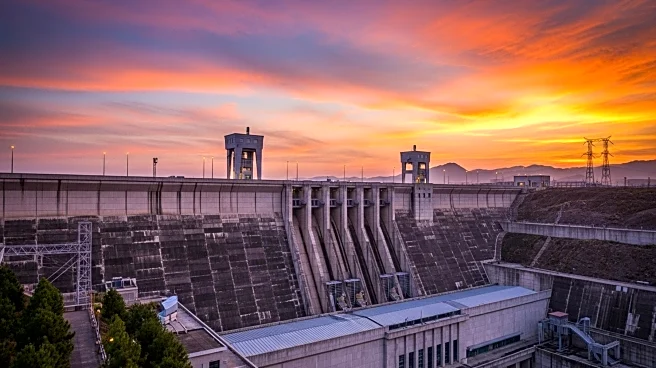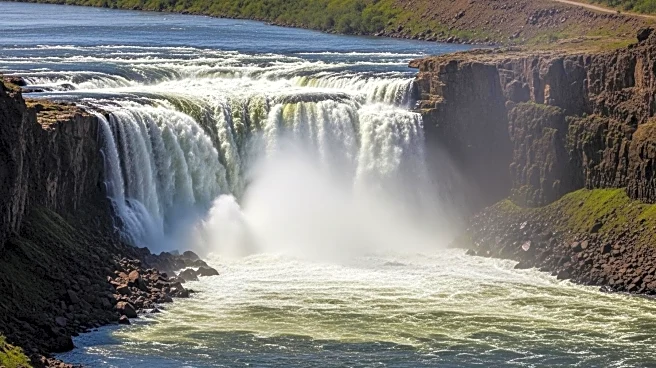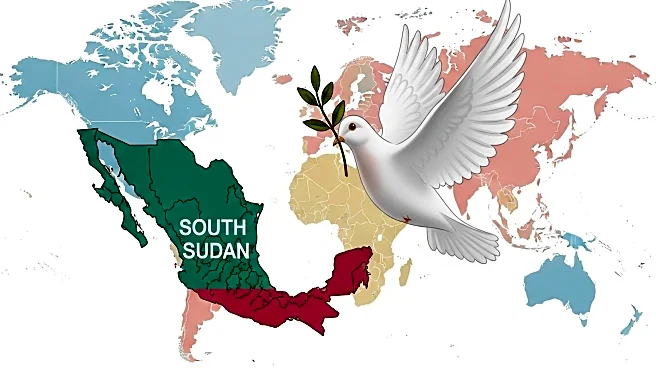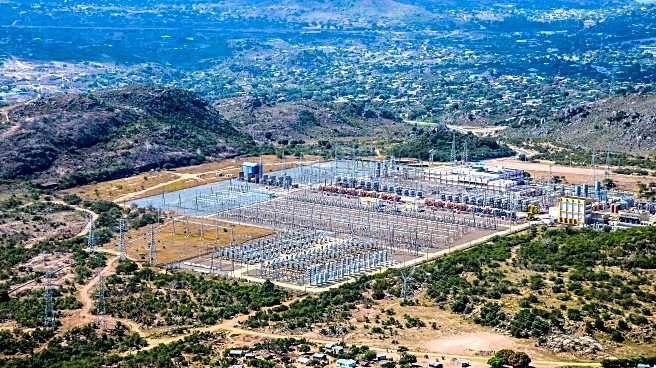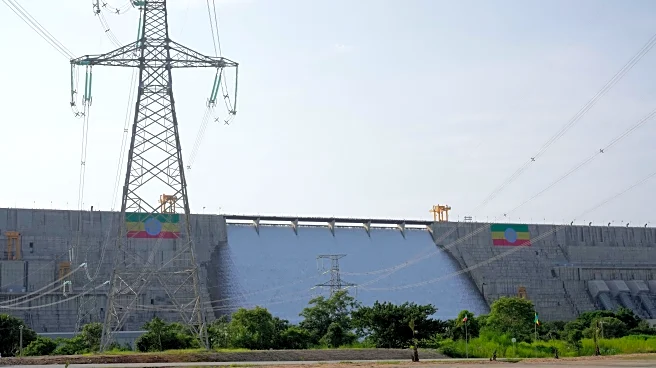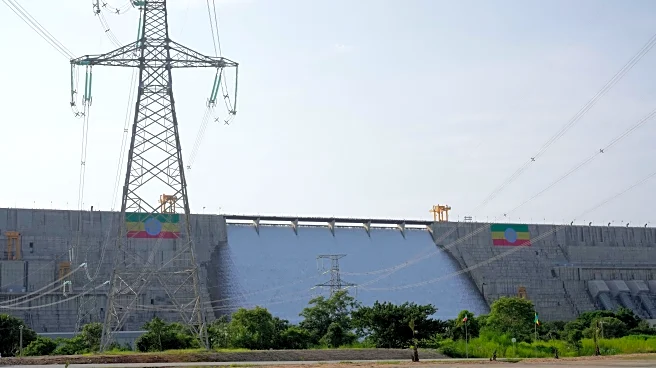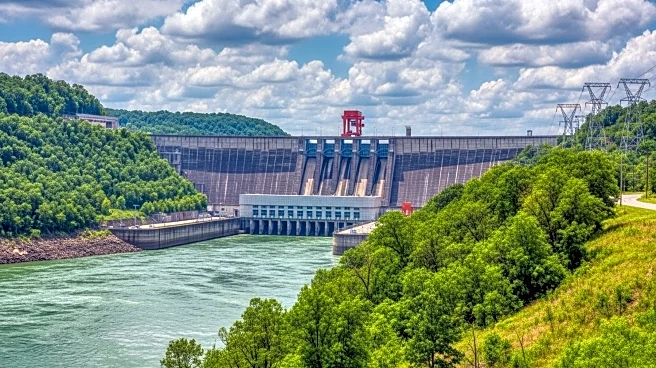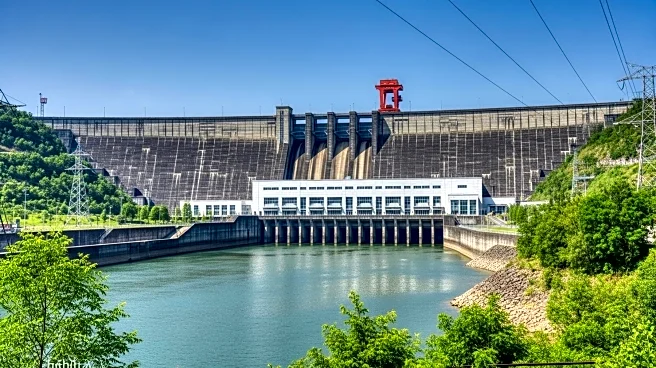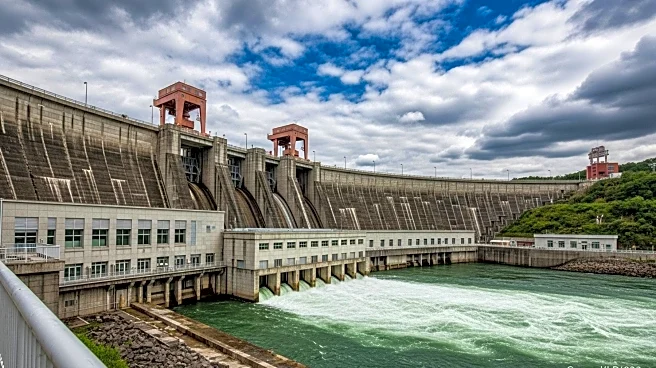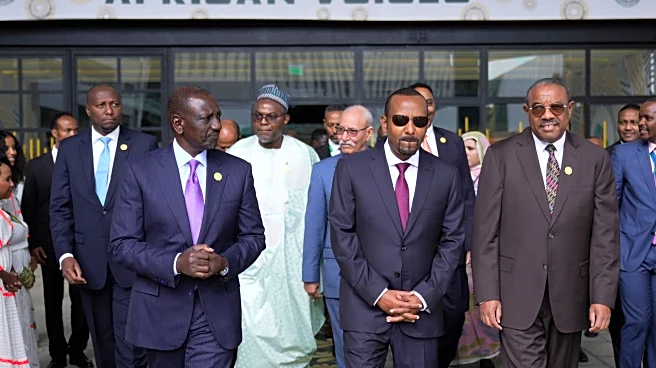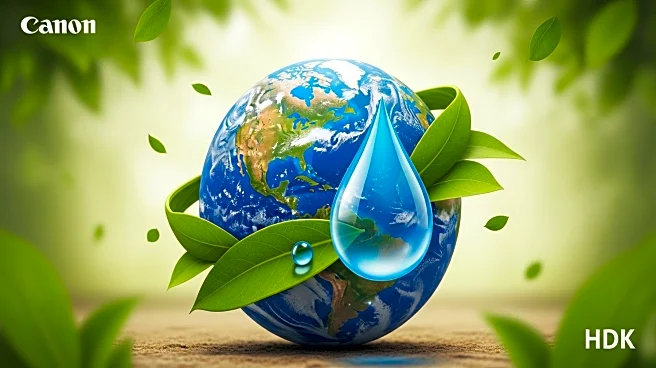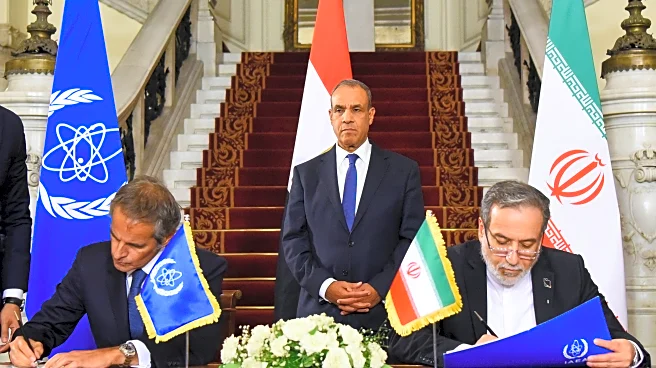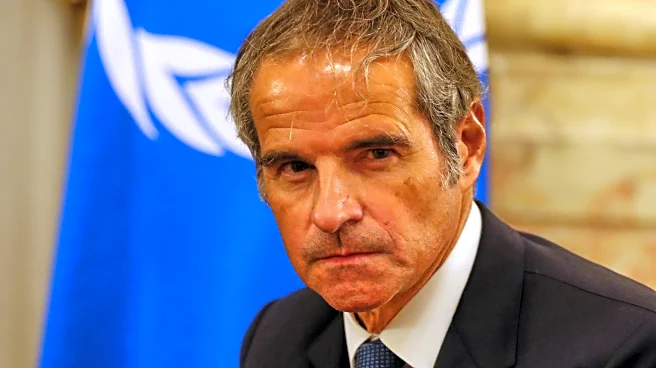What is the story about?
What's Happening?
Ethiopia has inaugurated the Grand Ethiopian Renaissance Dam, Africa's largest dam, aimed at boosting the economy and supporting electric vehicle development. The dam, located on a Nile tributary, is expected to double Ethiopia's electricity generation capacity. Neighboring countries, including South Sudan and Kenya, have expressed interest in importing power from Ethiopia, viewing the dam as a pan-African achievement. However, Egypt has raised concerns over reduced water flows downstream, citing violations of international law and existential threats. Ethiopia's Prime Minister Abiy Ahmed assured neighbors of shared prosperity and no intention to harm their water rights.
Why It's Important?
The dam represents a significant step in Ethiopia's efforts to modernize its energy infrastructure and reduce reliance on fossil fuels. It also highlights the potential for regional energy cooperation, with countries like Kenya and South Sudan seeking to alleviate electricity deficits through power imports. However, the project has sparked controversy, particularly with Egypt, which relies heavily on the Nile for water. The situation underscores the challenges of balancing national development goals with regional resource management and the potential for diplomatic tensions.
What's Next?
Ethiopia plans to continue developing its energy infrastructure, potentially signing power agreements with neighboring countries. Meanwhile, Egypt may pursue diplomatic or legal avenues to address its concerns over the dam's impact on water flows. The situation could lead to further negotiations or international mediation efforts to reach a consensus on the dam's operation. Additionally, Ethiopia's success with the dam may inspire other African nations to pursue similar projects, potentially reshaping the continent's energy landscape.
Beyond the Headlines
The dam has become a source of national pride in Ethiopia, symbolizing the country's ability to achieve ambitious infrastructure goals. It also raises broader questions about the role of international law in resolving transboundary water disputes and the potential for collaborative resource management in the Nile Basin. The project highlights the need for sustainable development practices that consider environmental and geopolitical factors.
AI Generated Content
Do you find this article useful?
